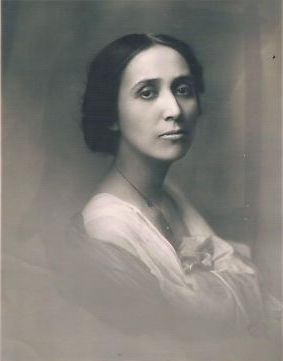
Laura Cornelius Kellogg
Reclaiming an Indigenous Visionary
So why has her story almost been lost?
Luckily for us, scholars Kristina Ackley (Oneida/Bad River Ojibwe) and Cristina Sanciu have scoured sources dating back to the early 1900s to compile a powerful history of Laura Cornelius Kellogg in the introduction to their book, Laura Cornelius Kellogg, which contains a republication of Kellogg’s seminal work, Our Democracy and the American Indian. Much of the information in this article comes from their work.
Like many other Indigenous leaders, her story was eclipsed by the narratives of European-Americans, and for Kellogg in particular the historical emphasis given to white feminists and anthropological perspectives of the vanishing Indian. For Women’s History Month we revive the story of this foremother who used traditional wisdom to envision a future with politically and economically independent Native nations across Turtle Island. For her own people, Kellogg was a visionary who conceived of a flowering of Haudenosaunee culture through a return to tradition, not assimilation into white American culture, led by a restored and powerful Haudenosaunee Confederacy.
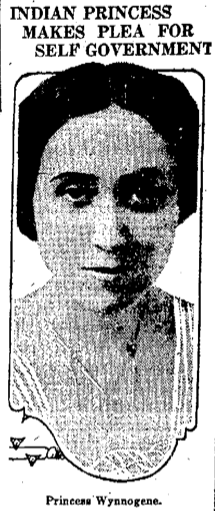
A Rich Cultural Heritage
Laura Cornelius Kellogg (1880-1947) was born on the Oneida reservation in Wisconsin in 1880 to Adam Poe and Cecilia Bread Cornelius, a family with a distinguished lineage of traditional leadership. Her paternal grandfather was John Cornelius, Oneida chief, and her maternal grandfather was Dehowyadilou, Chief Daniel Bread, who helped find land for his people after the Oneidas were forcibly removed from their homeland in New York State in the early 1800s.
Kellogg also came from a long line of strong Haudenosaunee women, although the missing record of her grandmothers’ names is testament to male colonial bias in historical documentation. In 1903, when Kellogg was 23 and already a media star, she said in an interview for The New York Tribune, “Perhaps it seems strange to an outsider, for I know the ideas that prevail in regards to Indian life, but to do something great when I grew up was impressed upon me from my cradle by my parents, and I have known no other ambition.”
Laura Cornelius Kellogg’s upbringing was rich in traditional Oneida values, history, and beliefs. “From my infancy,” she wrote, “I had been taught what we Oneidas had contributed to American liberty and civilization.”
Coming from Haudenosaunee culture, where women hold great political and social power, Laura Cornelius Kellogg advocated publicly for women’s rights. Kellogg wrote, “It is a cause of astonishment to us that you white women are only now, in this twentieth century, claiming what has been the Indian woman’s privilege as far back as history traces.”
While Kellogg was educated as a child at an Episcopal school, she remained close to her family and traditional culture. She consistently affirmed that traditional teachings from elders and from “time spent at the soup kettle on the reservation” were her source of wisdom. Laura Cornelius Kellogg spoke and wrote of traditional viewpoints in language and values still used in the Confederacy and by traditional peoples.
Honoring the Elders and Embracing Modernity
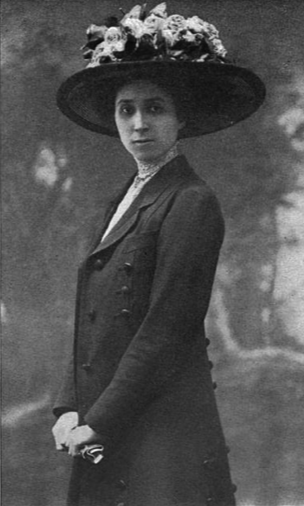
“Kellogg focused on restoring traditional governance and lands for the Haudenosaunee at a time when assimilation and the breakup of reservations were generally seen as the best path for advancing Native American interests.”
In contrast to many of her contemporaries, Kellogg focused on restoring traditional governance and lands for the Haudenosaunee at a time when assimilation and the breakup of reservations were generally seen as the best path for advancing Native American interests. Prominent Native Americans, including Oneidas such as Dennison Wheelock, a renowned conductor, composer and musician, held opposing ideas about the importance of integration into American culture.
In a speech to the Society of American Indians, an organization Kellogg helped found, she defended the value of an Indigenous identity founded on the knowledge of the elders.
“There are old Indians who have never seen the inside of a classroom whom I consider far more educated than the young Indian with his knowledge of Latin and algebra. There is something behind the superb dignity and composure of the old bringing up; there is something in the discipline of the Red Man which has given him a place in the literature and art of this country, there to remain separate and distinct in his proud, active bearing against all time, against all change.”
Kellogg understood the cultural importance and authority of the Oneida Clan Mothers, seeing them as protectors of the nation’s culture. She also understood traditional values as a means to support and honor Haudenosaunee women.
Rooted in a traditional understanding of ancestral lands and a thousand years of Haudenosaunee democracy and self-governance, Kellogg envisioned transforming Indian reservations into cooperative, prosperous, self-governing communities, using local resources and fostering Indigenous businesses so Native Americans worked for themselves instead of for “the exploiter.” She was deeply opposed to residential schools, seeing them as a means to destroy traditional language and culture, and even worse as a means to sever connections between families, clans, and generations. Instead, Laura Cornelius Kellogg saw the future of Native American education as a meeting ground between traditional knowledge and “Caucasian” education, including support for Indigenous students pursuing higher education.
On a political level Kellogg worked to restructure and revitalize the Haudenosaunee Confederacy, basing her vision on the structure, organization, and geography of the Six Nations in the 1700s, before the Sullivan-Clinton Campaign of 1779, subsequent settler land grabs, and forced removals in the early 1800s. Given the harsh treatment of centuries and the political and cultural environment in the 1920s and 1930s, this was the work of a true visionary.
A Scholar and a Rising Star
Laura Cornelius Kellogg graduated with honors from Grafton Hall in Fond du Lac, Wisconsin, in 1898. A noted linguist, she spoke Oneida, Mohawk, and English fluently, studied Greek and Latin, and compiled a grammar of the Oneida language before graduating high school, an achievement that brought her national recognition. Her intelligence, conviction and charisma made her a cultural star and media darling. In 1903 the Los Angeles Times described her as “a woman who would shine in any society.”
Laura Cornelius continued her studies at Stanford University, Barnard College, and the University of Wisconsin. In 1908 she began a two-year tour of Europe, where she made a vivid impression on European society. “Wherever she has gone,” a London paper noted, “society has simply ‘ovated’ her, and were she to remain in England long, she would doubtless be the leader of the circle all her own.” While in Europe she became especially interested in a progressive urban planning concept called the Garden City movement, which she thought could be applied to Native American reservations.
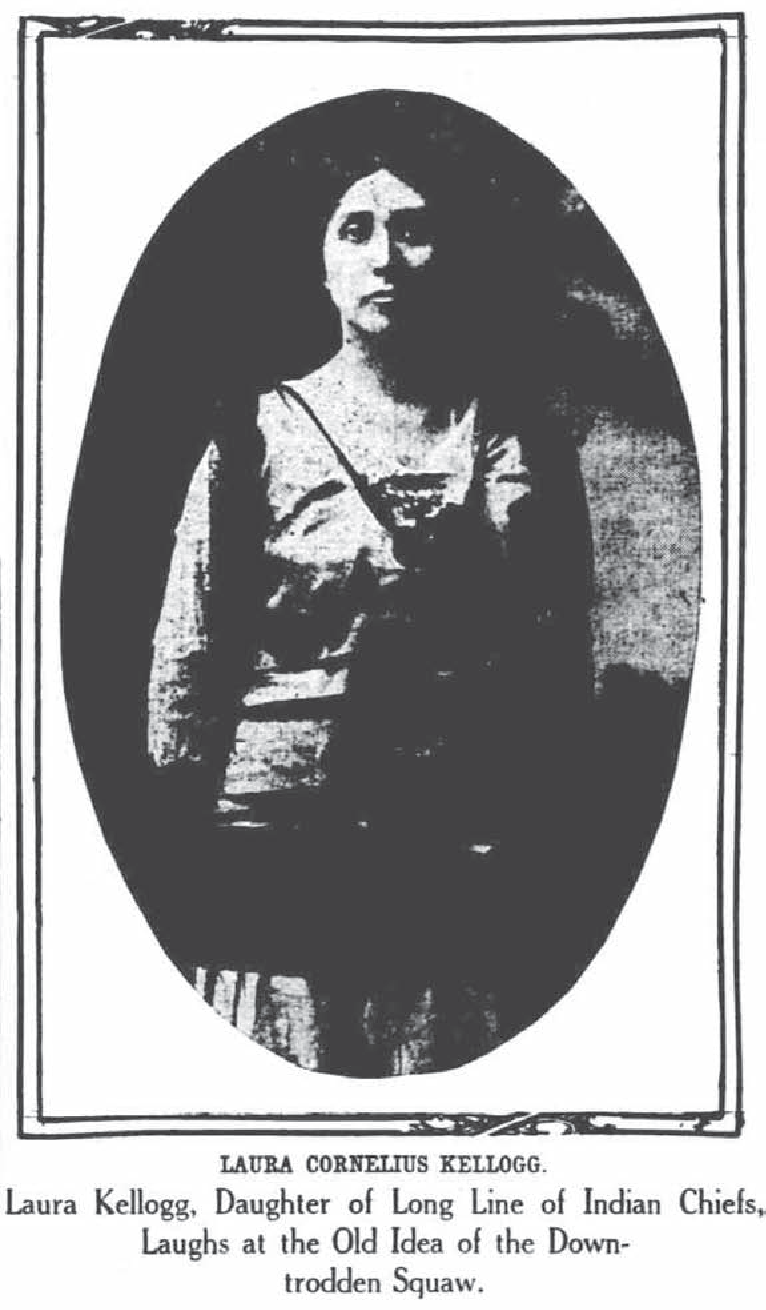
“I would not be anything but an Indian,” she declares proudly. “I am not weaned from my people and never will be. More schooling than usually falls to the lot of an Indian woman and more contact with Caucasian artificiality and insincerity have graduated me into what might be called a polite Indian, and the process, I sometimes think, has taken a lot out of me.”
Her profound passion to redress the wrongs done to the Haudenosaunee and other Native nations soon burned off any remnants of polite “Caucasian” insincerity. Kellogg continued to speak and write with an incendiary honesty about the radical divide between American democratic principles and their actual treatment of Native Americans.
In 1912 Cornelius married Orrin J. Kellogg, a lawyer of Seneca ancestry. In contrast to his wife’s high national and international profile, Orrin Kellogg shunned the spotlight, but he worked as a lawyer and advisor for many of the same Native American nations as his wife and the couple’s visions aligned.
Justice and Independence
Understanding that economic deprivation was the cause of many issues among the Haudenosaunee, as well as other Native American nations, Laura Cornelius Kellogg saw political sovereignty and financial independence as essential to the Haudenosaunee and other Native American nations. She spent her life working on both expanding political independence for native nations and developing models for Indigenous economic self-sufficiency.
As part of these efforts, Kellogg was a founding member of the Society of American Indians, a pioneering Pan-Indian organization. At a national meeting in 1911, before this group of renowned Indigenous intellectuals and activists, she presented her vision of transforming reservations into self-governing “market cities” surrounded by green belts. The Rev. Sherman Coolidge, an Arahapo educator and Episcopal priest, wrote that “tears came to his eyes to realize that we had a woman of brilliance among us and to think of the great good she could do for the Indian people.”
Renowned for her eloquence, Kellogg testified before the Senate Committee on Indian Affairs several times in the 1910s and 1920s, testifying that the Bureau of Indian Affairs was corrupt and inefficient. She condemned the irresponsibility of Indian Office personnel and the misuse of government funds, declaring that in her Lolomi Plan for revitalizing reservations, the “huge sums paid [to] white people” would be paid instead “to the Indians themselves.”
To advance her vision, Kellogg published Our Democracy and the American Indian: A Comprehensive Presentation of the Indian Situation as It Is Today in 1920, laying out both her criticisms of contemporary treatment of Native Americans and her vision of traditional belief and governance systems being used to treat social problems. Critical to her vision was the reinstatement of land and she led efforts to restore land to the Haudenosaunee Confederacy as a whole, in keeping with her efforts to restore traditional social structures from the clan level to the whole Confederacy.
In 1919 Laura Cornelius Kellogg traveled to Switzerland using a Haudenosaunee passport, where she demanded justice for American Indians at the League of Nations. As part of this fight for justice she worked valiantly for the return of 6 million acres of Haudenosaunee lands valued at $2 billion.
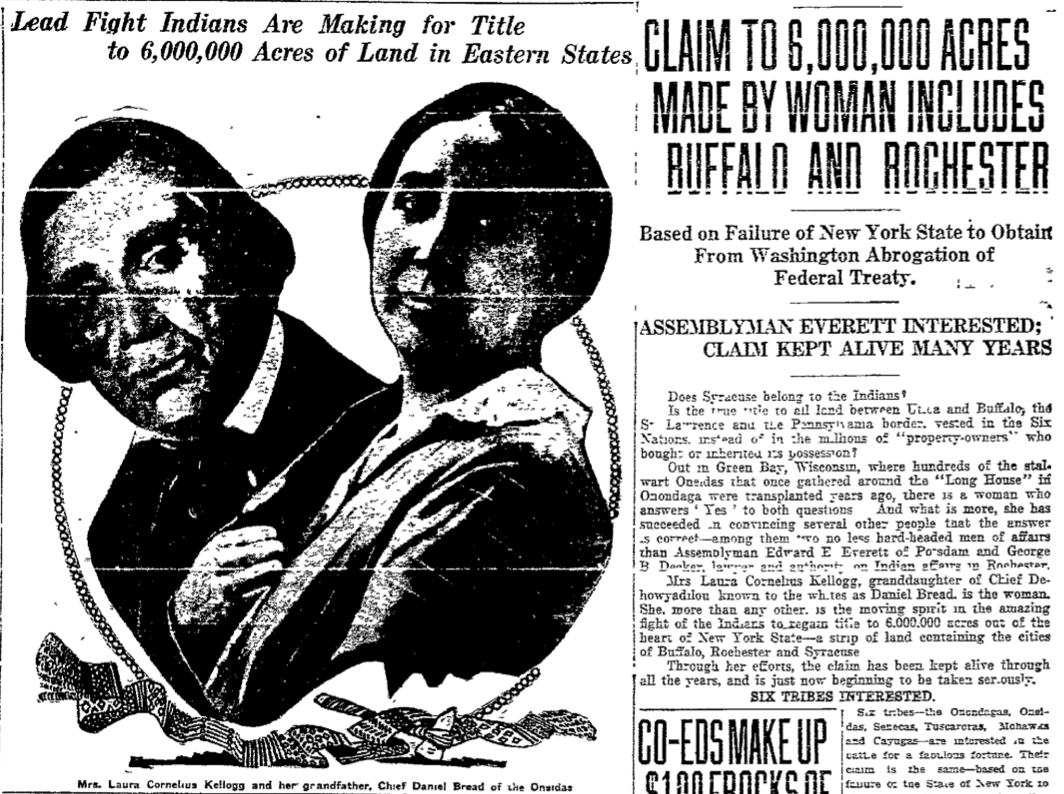
Her refusal to give in to contemporary ideas about colonial assimilation cost her dearly, as did the intensity of her rhetoric. Famed Seneca archeologist, historian, and museum director Arthur C. Parker admired Kellogg’s intellect but found her communication style difficult. Perhaps Kellogg came by her combative communication style from her American education, or perhaps it was a by-product of her willingness to fight for traditional values at a time when ideas about assimilation dominated Indigenous cultures. In some ways she was a polarizing figure among Native nations due to her passionate intensity and unwavering commitment to her vision.
Legacy
As a major public figure in both America and Europe, Kellogg’s life and actions make her a powerful example of women’s traditional rights and power among the Haudenosaunee. But her historical erasure is also an example of the diminishment of Haudenosaunee culture, part of hundreds of years of brutal attacks on Indigenous culture.
But public awareness of Haudenosaunee culture and contributions to the American feminist movement is shifting. Recently a group of cultural advisors from across the Confederacy was asked to select a historical figure to represent Haudenosaunee history and female leadership in a new statue to be installed in Seneca Falls. The committee selected Laura Cornelius Kellogg, filling a conspicuous gap in the Women’s Rights National Historical Park, which until the installation there was little to no mention of the Haudenosaunee influence on American women’s rights, nor the fact that the museum is in traditional Haudenosaunee territory and only a few miles from the Gayogohó:no’ (Cayuga) Nation.
Based on the committee’s consensus recommendation, the statue of Laura Cornelius Kellogg holds the Women’s Nomination Belt, in colored bronze of purple and white, to highlight the power of women to uphold their nations in sisterhood, and to choose and depose the leadership of their nations. Diane Schenandoah, an Oneida sculptor, acted as consulting artist. The plaque contains a land acknowledgment in Gayogohó:no’ and the sculpture itself is set apart from the sculptures of Harriet Tubman, Martha Coffin Wright, and Sojourner Truth, representing the cultural independence and political sovereignty of the Haudenosaunee.
Laura Cornelius Kellogg was chosen because of her lifelong work to restore the Confederacy and traditional governance, as well as her efforts nationally and internationally to return sovereignty and lands to the Haudenosaunee. She is an ancestor whose vision of self-governance and economic independence is shining for Indigenous people today.
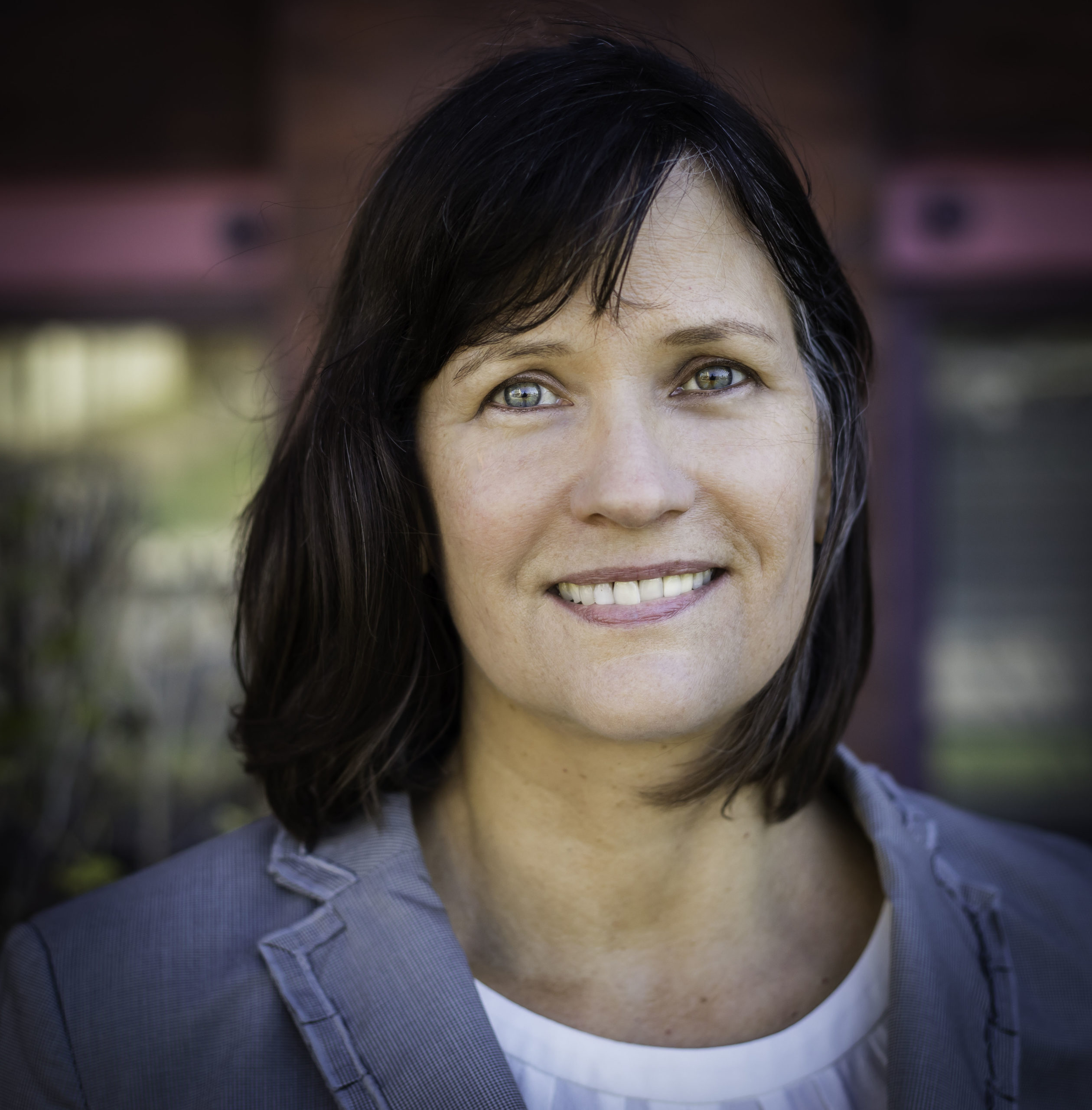
Catherine Faurot: A writer and researcher with Oneida ancestry who lives and works in traditional Haudenosaunee territory.